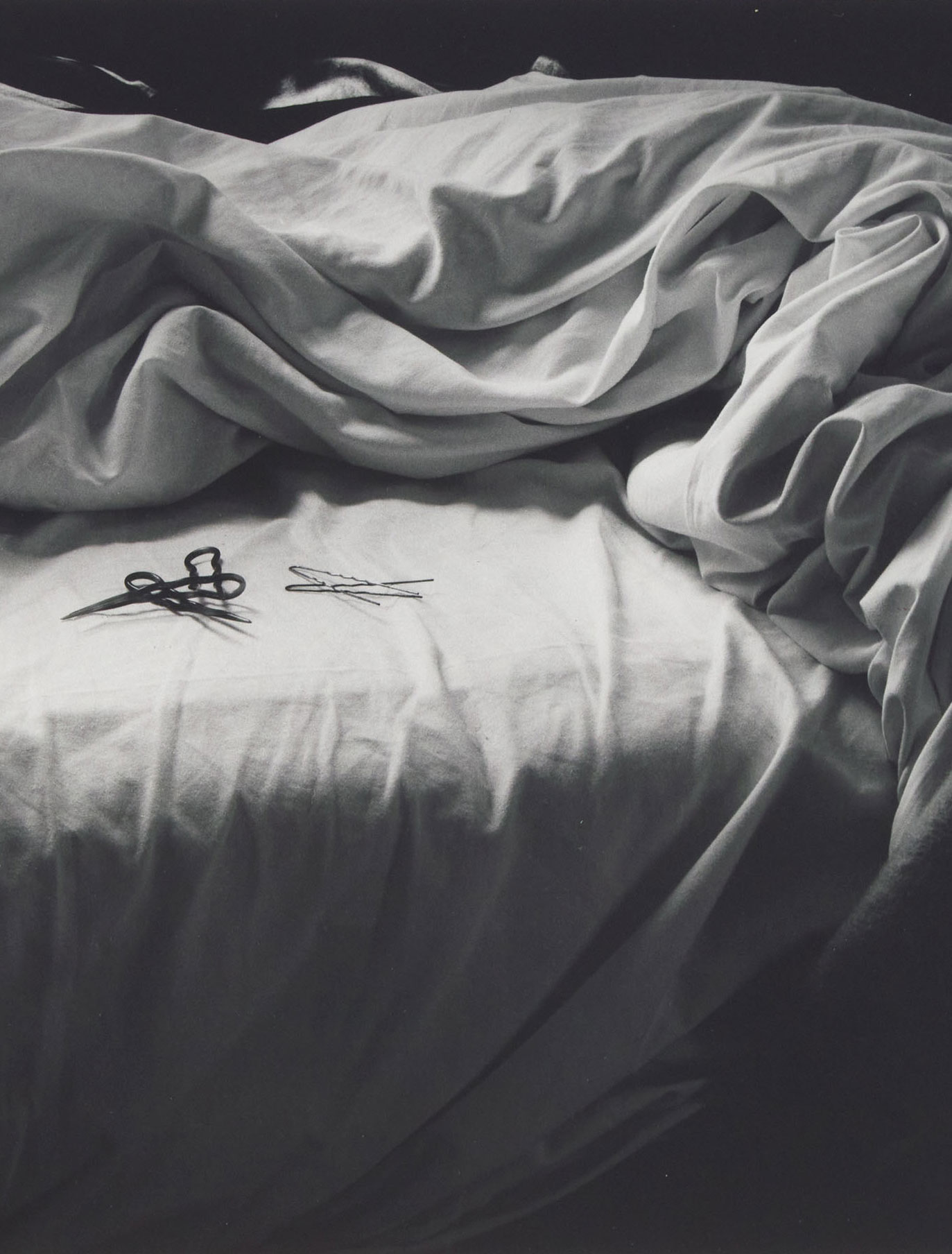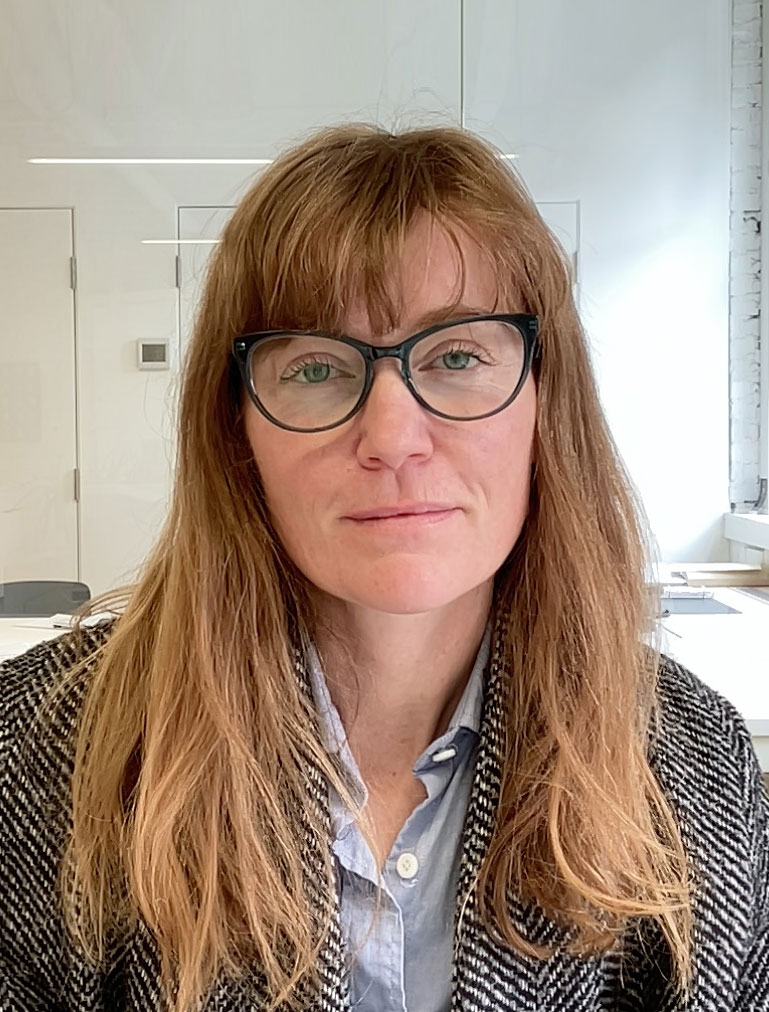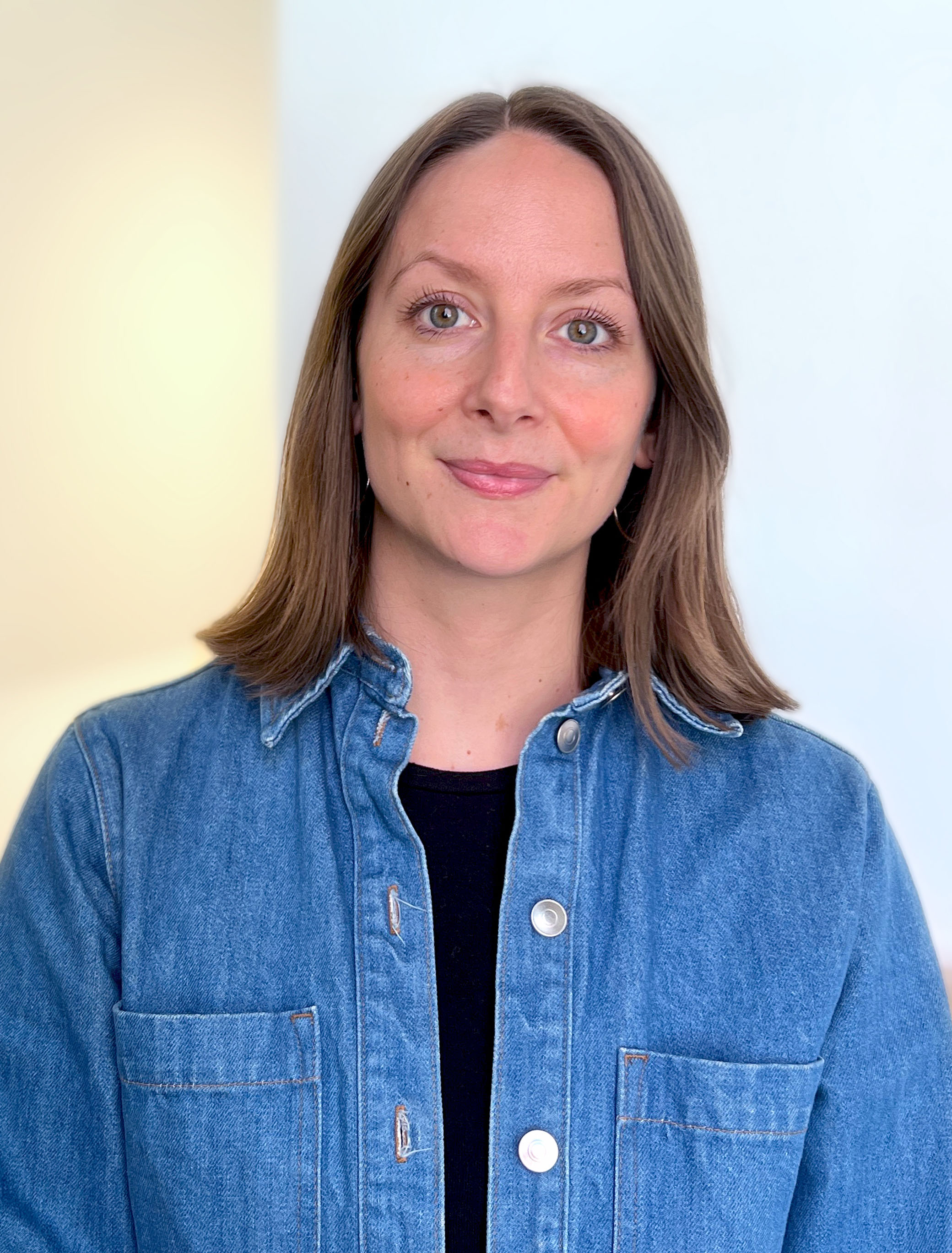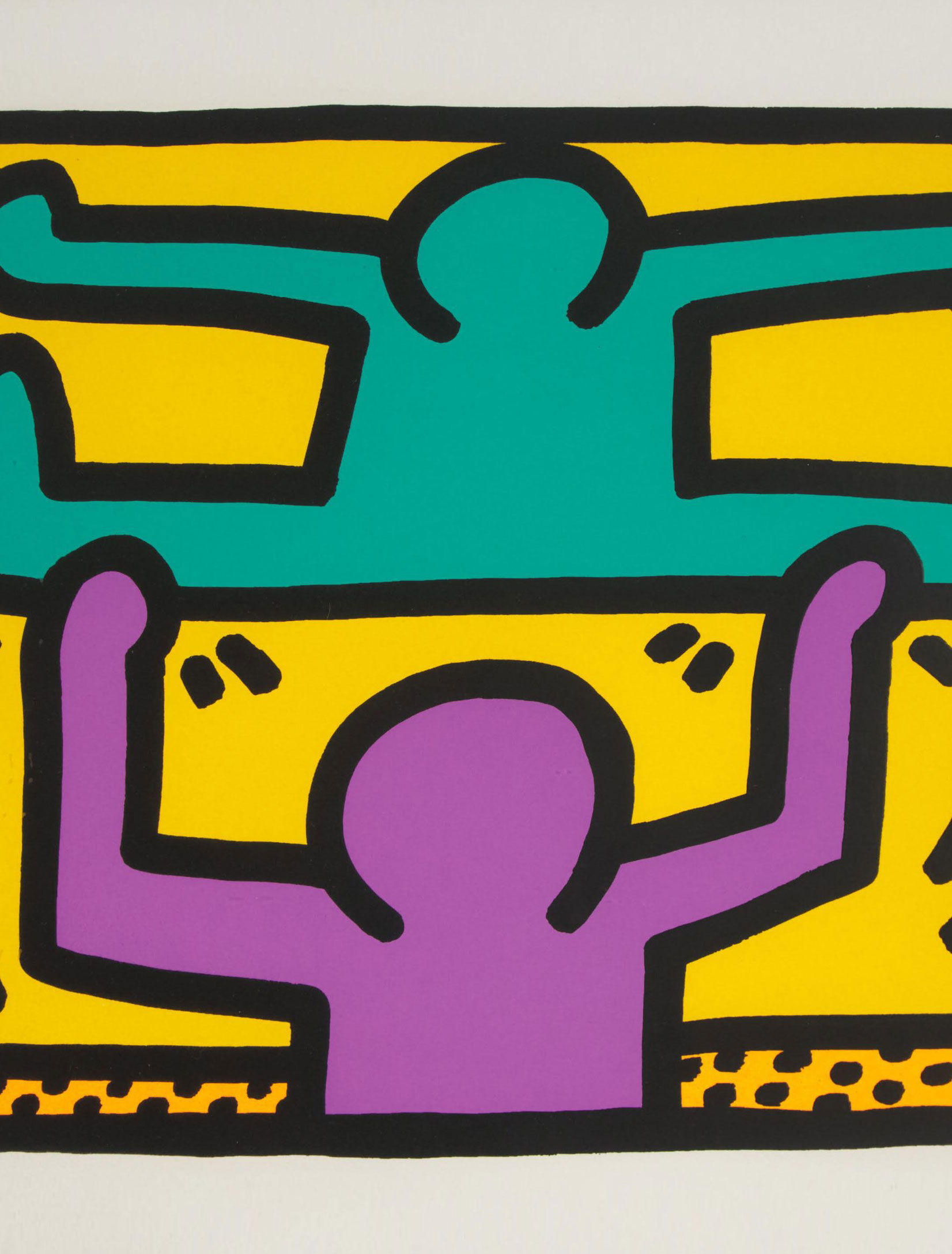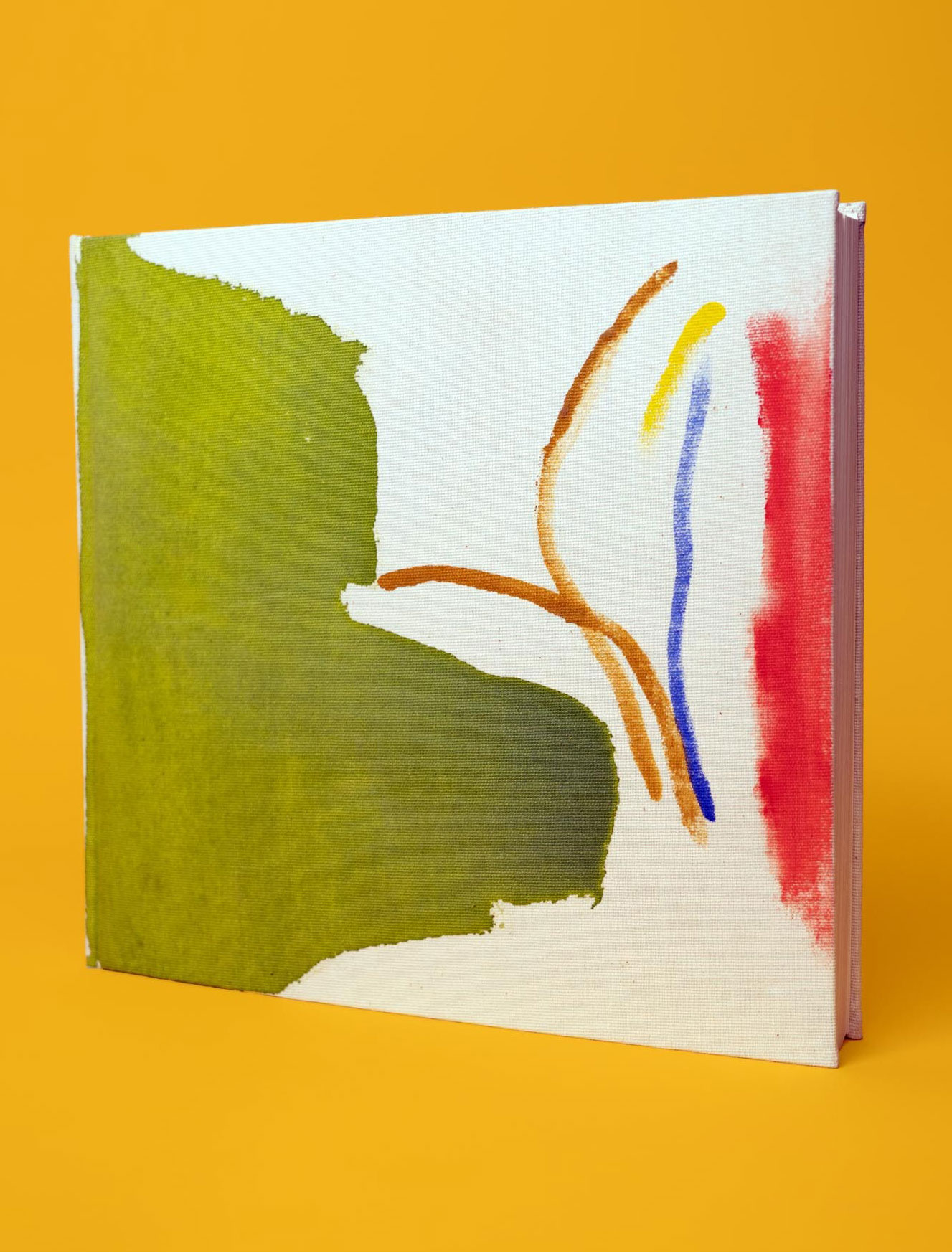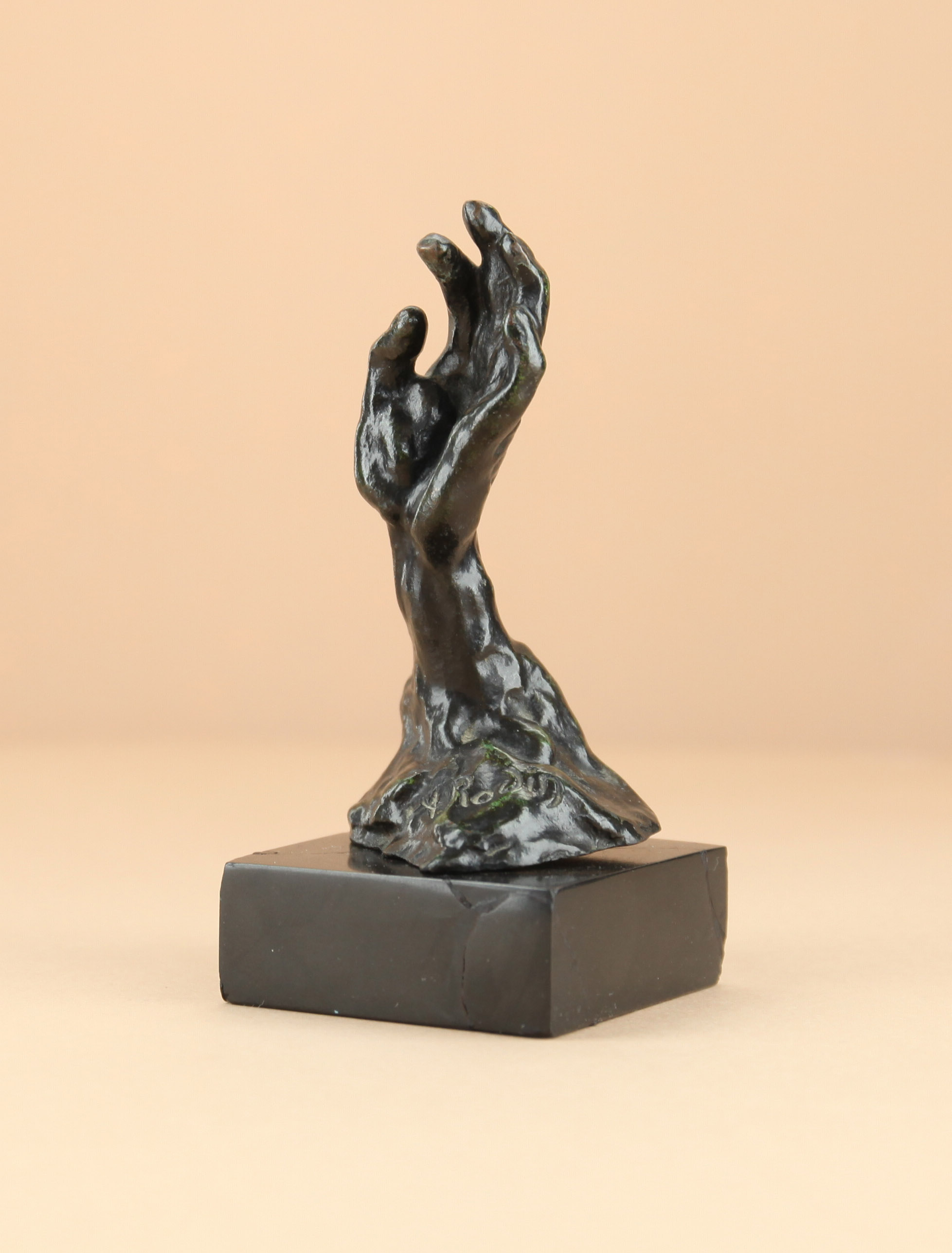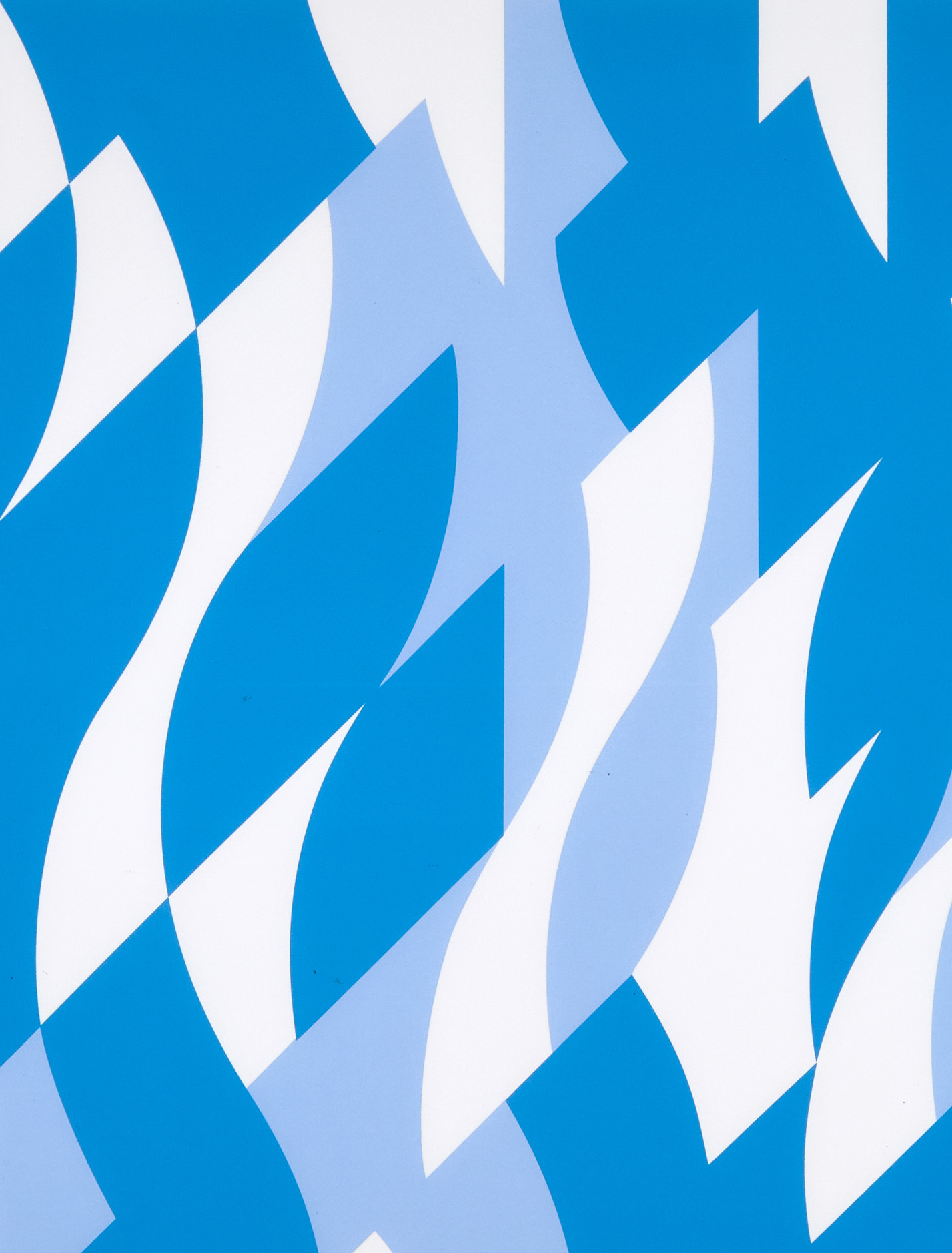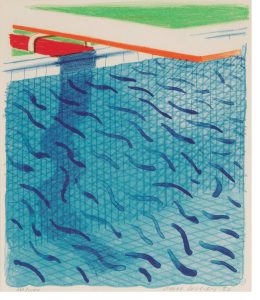
Waddington’s is pleased to include Paper Pools, Pool Made with Paper and Blue Ink for Book, 1980 in our Spring Editions auction, which will be available for bidding April 20-25. To mark the occasion, we took a deep dive into the origins and symbolism of Hockney’s famous pools.
COMING TO AMERICA
Hockney’s first solo exhibition in London was held at the Kasmin Gallery in 1963. The show proved to be an enormous success and sold out completely, providing the artist with enough money to move from London, a city Hockney found expensive and dull, to Los Angeles in 1964. In 2009, Hockney told Dian Hanson that “I came to Los Angeles for two reasons. The first was a photo by Julius Shulman of Case Study House #21, and the other was AMG’s Physique Pictorial [a popular homoerotic ‘beefcake’ magazine].” From the window of the plane on his first arrival, Hockney noticed the proliferation of blue swimming pools, which struck him: “I realised that a swimming pool in England would have been a luxury, whereas here they are not, because of the climate.” Of the city itself, he noted that “I instinctively knew I was going to like it. And as I flew over San Bernardino and saw the swimming pools and the houses and everything and the sun, I was more thrilled than I have ever been in arriving in any city.”
Like so many, Hockney made his way to Los Angeles in search of a dream. Emma Baker, Sotheby’s head of evening sales in London, explains that “for Hockney, L.A. was a land of possibility, of mid-century modern architecture, beautiful people, and deep-blue pools,” comparing the artist’s swimming pools to Paul Gaugin’s painting of Tahiti, both expressing a “marked sense of the exotic.”
NEW PALETTE, NEW TECHNIQUES
The new surroundings gifted Hockney not only with a bright new palette, but with a new milieu. Bohemianism and sexual liberation abounded in California, a stark contrast in that homosexuality was illegal in the UK at the time. California was the home of a robust gay community, allowing Hockney to openly embody his own sexuality for the first time in his life. The thriving gay culture in California also produced an incredible array of representative imagery, from photography and printed materials to pornography both hard and soft, all of which would inspire the artist.
His first swimming pool painting was California Art Collector, 1964, inspired by visits to the palatial homes of the wealthy. This would mark the beginning of a major obsession for David Hockney, who has made countless other depictions of the subject. Not only a symbol of American leisure, swimming pools allowed Hockney to paint nude or semi-nude male forms openly. The technical challenge of depicting water quickly became a twin preoccupation. The effects of the bright California sun on artificially blue pool water was a source of fascination, with Hockney noting that “in the swimming pool pictures, I had become interested in the more general problem of painting the water, finding a way to do it. It is an interesting formal problem; it is a formal problem to represent water, to describe water, because it can be anything. It can be any colour and it has no set visual description.”
Andrew Wilson, co-curator of a recent retrospective at Tate Britain, writes that “the paintings are about how you represent the immaterial: water and light, transparency, different kinds of liquidities. And they are interested in the conventions of picture-making. The way Hockney paints water in his swimming pools employs abstract strategies, like [those in] paintings by Bernard Cohen, Jean Dubuffet, or Helen Frankenthaler. He uses [abstract] techniques to paint something as impossible to fix as light on water or the passage of bodies underwater.”
Acrylic paint was the artist’s medium of choice, which he would dilute with detergent and water to mimic the translucent appearance of water. Hockney would use various strategies to paint water, playing with camouflage-like patterns of flat colour or wiggly lines depicting ripples, working with thick paint applied with a roller or delicate brush strokes. Hockney also experimented with different media, from acrylic to watercolour, crayon, photo collages and lithography.
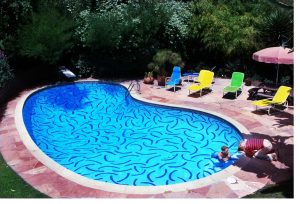
DEFINING IMAGERY
Though born in Yorkshire in Northern England, Hockney’s swimming pools have deeply influenced the visual identity of Southern California. Los Angeles was a relatively new city when Hockney arrived, and Hockney helped define a certain carefree fantasy image. The artist saw the city as uncharted territory, and explained: “There were no paintings of Los Angeles. People then didn’t even know what it looked like. And when I was there, they were still finishing up some of the freeways. I remember seeing, within the first week, a ramp of freeway going into the air, and I suddenly thought: ‘My God, this place needs its Piranesi; Los Angeles could have a Piranesi, so here I am!”
Hockney’s obsession with the swimming pool would inspire other artists, including his friend Ed Ruscha, who made Nine Swimming Pools (1968). Michael Childers took this inspiration quite literally, photographing swimmers in Hockney’s own backyard, as well as a series of photographs of Hockney at work. Generations later, painters continue to find influence from Hockney’s sunny scenes. Though some critics have written about Hockney’s pools as places of ennui or unease, Alastair Sooke, writing for the BBC, points out that “to a young artist who had grown up in Britain during World War Two, experiencing deprivation and the austerities of rationing, LA’s swimming pools must have seemed almost impossibly luxurious and exotic…One of the most striking things about Hockney’s pool paintings is the way in which, consistently, they stand apart from the dominant tradition, in other art forms, of depicting Los Angeles in a sinister fashion (think of, say, Raymond Chandler’s literary noir, or Roman Polanski’s 1974 thriller, Chinatown). Swimming pools, in Hockney’s world, represent hedonism, sexual freedom, and straightforward joie de vivre.”
About the Auction:
We’re excited about our Spring Editions auction which will feature works by International artists David Hockney, Keith Haring, Helen Frankenthaler, Christopher Wool, Friedel Dzubas, Roy Lichtenstein, Kiki Smith, Sonia Delaunay, Bridget Riley, Sol Lewitt, Terry Frost, Yoshimoto Nara, Brice Marden, Francisco de Goya, Pablo Picasso, Joan Miró and Canadian artists including Alex Colville, Jack Bush, Jean Paul Riopelle, Alfred Pellan, Michael Snow, Christopher Pratt, Rita Letendre and more.
The auction will be available for bidding April 20-25, 2024.
Please contact us for more information.
On view at our Toronto location:
Monday, April 22 from 10:00 am to 5:00 pm
Tuesday, April 23 from 10:00 am to 5:00 pm
Related News
Meet the Specialists

Goulven Le Morvan
Director, International Art, Montreal
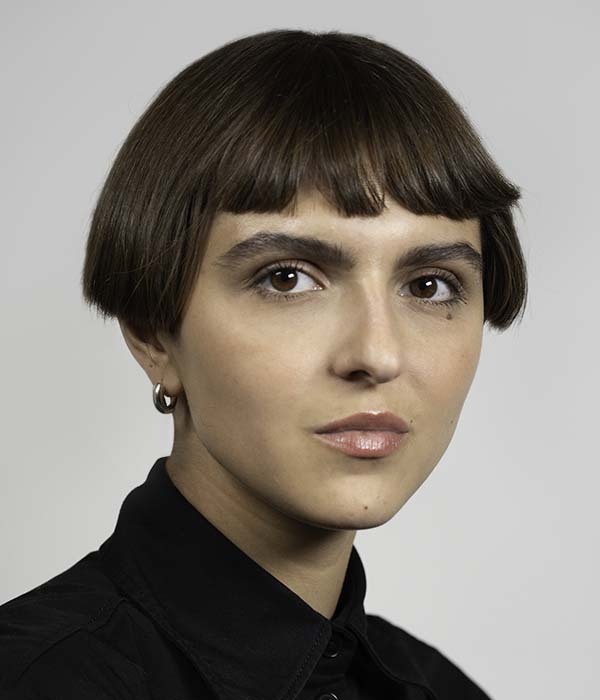
Alicia Bojkov
Consignment Specialist, International Art



